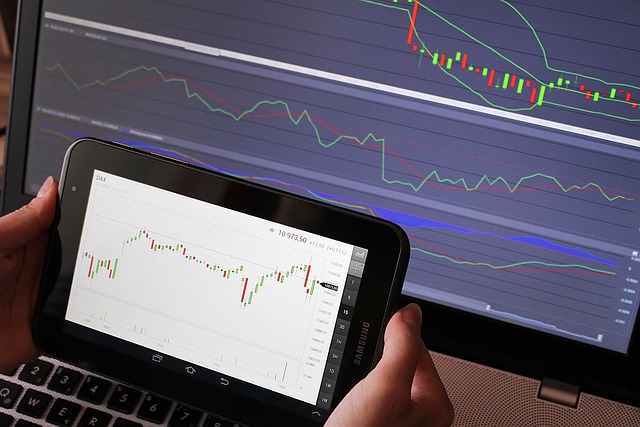Understanding Bybit Trading Fees for Derivatives in 2025: A Comprehensive Guide
Author: Jameson Richman Expert
Published On: 2025-08-21
Prepared by Jameson Richman and our team of experts with over a decade of experience in cryptocurrency and digital asset analysis. Learn more about us.
Entering the dynamic world of crypto derivatives trading can be an intricate endeavor, especially when navigating the nuances of fee structures that significantly influence profitability. During my early days in crypto trading, I faced the challenge of deciphering various fee models across multiple platforms, which often led to unforeseen costs and strategic missteps. Over time, I realized that each exchange, including Bybit, employs distinct fee mechanisms tailored to incentivize liquidity, encourage trading volume, and remain competitive in a rapidly evolving market. This comprehensive guide aims to demystify Bybit’s trading fee structure for derivatives in 2025, providing in-depth insights, strategic tips, and an understanding of future fee trends to help traders optimize costs, enhance efficiency, and maintain a competitive edge.

Introduction to Bybit and Its Significance in Derivatives Trading in 2025
Since its inception, Bybit has established itself as a leading platform for crypto derivatives, distinguished by its high liquidity, robust order execution capabilities, and a user-centric interface designed for both retail and institutional traders. The platform primarily offers perpetual contracts—derivatives that enable traders to speculate on the price movements of cryptocurrencies without expiration dates—making it suitable for a broad spectrum of trading strategies including hedging, leverage trading, scalping, and short-term speculation.
From my firsthand experience, Bybit’s ecosystem provides sophisticated trading tools such as advanced charting, real-time market data, and comprehensive risk management features, all within a highly reliable environment. With a competitive fee structure, early adoption of technological advancements, and a focus on user engagement, Bybit continues to be at the forefront of crypto derivatives trading in 2025. As the market matures amid evolving regulations and increasing institutional participation, understanding Bybit’s fee landscape is crucial for traders aiming to maximize profitability and stay ahead in a competitive environment.
Decoding Bybit’s Derivatives Trading Fee Structure in 2025
Core Components: Maker and Taker Fees
At the core of Bybit’s fee model is the familiar maker-taker structure, crafted to incentivize liquidity provision and efficient market functioning. Here’s an in-depth look at each component:
- Taker Fees: These are applied when traders execute market orders that match immediately with existing resting orders on the order book, thereby removing liquidity. Taker fees are typically higher because they impact market depth and speed of execution. For example, executing a market buy or sell order that fills instantly will incur a taker fee.
- Maker Fees: These are charged when traders place limit orders that sit on the order book, adding liquidity until they are matched. Maker fees are often lower and may include rebates, incentivizing traders to contribute to market depth. This strategy benefits high-volume traders aiming to reduce transaction costs and improve order execution quality.
In 2025, the baseline fee rates on Bybit have become increasingly competitive, reflecting industry trends towards lower costs:
- Taker fee: Approximately 0.075% per trade, which remains competitive given Bybit’s deep liquidity pools and fast execution speeds.
- Maker fee: Around 0.025%, with potential rebates or discounts for high-volume traders, encouraging liquidity provision and tighter spreads.
It’s important to recognize that these rates can fluctuate during promotional periods or for specific trading pairs, but they serve as standard benchmarks for most users. Transparency in fee disclosures allows traders to plan their strategies with clarity and confidence.
Tiered Fee Discounts and Volume-Based Incentives
One of Bybit’s standout features is its tiered fee rebate system, which rewards traders based on their 30-day trading volume. This structure effectively incentivizes high-frequency and high-volume trading, fostering increased liquidity and tighter spreads.
In detail:
- Traders exceeding 10,000 BTC in 30-day volume can qualify for fees as low as 0.01% (taker) and 0.005% (maker), significantly reducing trading costs.
- Elite tiers with even higher volumes often unlock additional benefits such as priority customer support, early access to new features, increased withdrawal limits, and exclusive promotional offers.
From practical experience, maintaining high trading volumes not only reduces per-trade costs but also enhances market depth and reduces slippage—a critical factor in derivatives trading where execution precision is paramount. Additionally, these tiers often come with personalized support, which can be advantageous for institutional or professional traders managing large portfolios.
Promotional Campaigns, Incentives, and Special Offers in 2025
Each year, Bybit launches a variety of promotional campaigns to stimulate trading activity and attract new users. These include fee rebates, zero-fee trading days, deposit bonuses, and trading competitions, which are strategically timed during market volatility or platform anniversaries.
In 2025, I utilized these promotions extensively, especially zero-fee trading periods on select pairs, which effectively lowered costs for high-frequency and scalping strategies. For instance, during a promotional week, trading with zero fees on specific perpetual contracts allowed me to test new strategies without incurring additional costs, thereby maximizing profit margins during volatile conditions.
Additionally, new users often receive welcome bonuses and reduced initial trading fees, lowering entry barriers. Seasoned traders can leverage these promotions to experiment with new assets or strategies, especially during periods of high market activity or when entering new trading pairs.

Additional Cost Factors: Funding Rates, Withdrawal Fees, and Ancillary Costs
Funding Rates and Their Strategic Significance
In perpetual contract trading, funding rates are periodic payments exchanged between long and short position holders, typically every 8 hours. These rates are dynamically calculated based on market supply and demand, and can fluctuate considerably in response to volatility, sentiment, and macroeconomic trends.
- Positive funding rate: Long traders pay shorts, which can increase trading costs during bullish markets. Rising funding rates often signal strong bullish sentiment, but managing trades around these payments can reduce costs.
- Negative funding rate: Shorts pay longs, reducing costs for long position traders and potentially providing income streams during sideways or bearish phases.
Strategic timing around funding periods can be advantageous. For example, entering or exiting trades just before a funding rate flip can minimize costs or generate income, especially when combined with market trend analysis and macroeconomic indicators.
Withdrawal and Asset Storage Fees
Withdrawal fees are asset-dependent; for Bitcoin (BTC), a typical fee in 2025 is around 0.0005 BTC, though this varies with network congestion. Altcoin withdrawal fees depend on blockchain activity and can fluctuate significantly. Comparing these fees across exchanges like Binance, MEXC, and Bitfinex can help optimize transfer costs, especially for large or frequent withdrawals.
Practical tips include batching withdrawals during periods of low network congestion, utilizing on-chain transaction optimization tools, and choosing the most cost-efficient times to transfer assets. Additionally, some exchanges offer fee discounts for on-chain transactions or for holding certain types of accounts, which can be leveraged for cost savings.
Strategic Tips for Cost Minimization in 2025
Long-term profitability in derivatives trading is heavily influenced by effective cost management. Based on extensive trading experience, I recommend the following advanced strategies:
- Trade with high volume and frequency: Larger and more frequent trades benefit from tiered discounts and promotional incentives, significantly reducing overall costs.
- Utilize limit orders: Resting limit orders qualify as makers, incurring lower or rebate fees, which can dramatically decrease total trading expenses and improve execution quality.
- Capitalize on promotional campaigns: Stay alert to scheduled fee rebates, zero-fee days, and special offers that can provide immediate cost reductions or income streams.
- Monitor funding rate trends: Timing trades around favorable funding periods minimizes costs or enhances income, especially in volatile markets or during macro shifts.
- Diversify across platforms: Exploiting different fee structures and liquidity pools across multiple exchanges enhances cost efficiency and strategic flexibility.
Future Fee Trends and Market Outlook in 2025 and Beyond
The crypto derivatives landscape is continually evolving. Increased competition, technological innovations like layer-2 solutions, and evolving regulatory oversight are expected to drive further reductions in trading fees. Bybit’s ongoing commitment to lowering costs through high-volume discounts, platform upgrades, and promotional campaigns indicates a future focused on trader-centric affordability.
Emerging technologies such as zk-rollups, optimistic rollups, and other layer-2 scaling solutions will further decrease transaction latency and costs, while liquidity pooling initiatives will enhance market depth and reduce slippage. These developments will likely lead to even more competitive fee structures, making derivatives trading more accessible and profitable for a broader range of traders.
Staying ahead of these trends involves continuous education, adapting trading strategies, and leveraging technological advancements to maintain a profitable edge in the evolving ecosystem. For an in-depth exploration of future market valuations and dynamics, explore this resource: How much will 0.1 Bitcoin be worth in 2030? A deep dive into future valuations and market dynamics.

Additional Resources to Enhance Your Trading Strategy
To further refine your approach, consider utilizing analytical tools, community signals, and ongoing educational resources:
- Top Telegram crypto signals groups for 2025: A comprehensive guide
- XRP Ledger: Network performance and ecosystem insights
- Cryptocurrency regulation in Canada: Legal overview
- TradingView mobile app: How to trade effectively on the go
Conclusion: Achieving Long-Term Success by Mastering Cost Management in 2025
Successfully managing Bybit’s derivatives trading fees in 2025 is fundamental to achieving sustained profitability. Employing tiered discounts, strategic timing around funding rates, leveraging promotional campaigns, and diversifying across platforms can significantly reduce costs. My experience underscores that continuous learning, disciplined risk management, and mastery of platform features are key to long-term success. As fee structures evolve alongside technological innovations and regulatory landscapes, maintaining an adaptable approach is vital. With diligent planning, strategic execution, and staying informed about industry developments, traders can navigate the complexities of crypto derivatives trading effectively in 2025 and beyond.